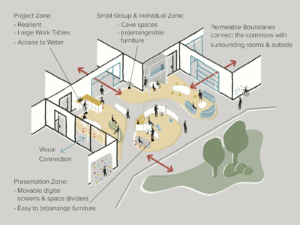Teaching Common Core Through Integrated History and Language Arts

The eLearning Strategies Symposium in Costa Mesa, Ca. is here. I am looking forward to attending, learning, and presenting! Colleague Dave Dillon and I will be conducting our workshop, Teaching Common Core Through Integrated History and Language Arts, Friday afternoon. Participants will explore two award winning History websites that are used in Riverside Virtual School courses to integrate Common Core Standards in History and English. These websites — Stanford History Education Group (SHEG) and Historical Thinking Matters — and online activities engage students in historical inquiry, opposing viewpoints, meta-cognition, and activities where students challenge the textbook with primary source documents in an online and blended classroom environment. A variety of lessons and online activities allow students to become independent learners by engaging in online historical investigations and argumentative essay writing.
When designing using these websites, it is important to understand the Introduction of ELA CCSS CA standards, attached here. Here are a few highlights:
CCSS is an integrated model of literacy
Although the standards are divided into Reading, Writing, Speaking and Listening, and Language strands for conceptual clarity, the processes of communication are closely intertwined. The students should engage in multiple standards in every lesson, every day and every week. It is best when student learning experiences implicitly contain a wide variety of CCSS.
There is a shared responsibility for students’ literacy development
The grades 6–12 standards are divided into two sections: one for ELA and the other for history/social studies, science, and technical subjects. This division reflects the unique, time-honored place of ELA teachers in developing students’ literacy skills while at the same time recognizing that teachers of other subjects must have a role in this development as well. CCSS should be taught interdisciplinary. Students should develop habits of mind that naturally transition from classroom to classroom and activity to activity.
What is not covered by the Standards
The standards define what all students are expected to know and be able to do, not how teachers should teach. While the standards focus on what is most essential, they do not describe all that can or should be taught. It is important that teachers are clear on the difference between CCSS and content. The instructional designer will use the chosen content to develop the CCSS habits of mind.
We will walk participants through the websites to highlight how we use them in our integrated History/Language Arts model, focusing specifically on the Zoot Suit Riots and Scopes Monkey Trial. As an English teacher, it is my responsibility to support literacy across the disciplines. If History is an account of the past, Language Arts is how we tell the stories.
Language Arts is the art of communication. I see my role as creating competent readers, writers, listeners, and speakers, regardless of the content, and helping students hone their academic skills in order to be good citizens with a capacity for self governance in a democracy. Is that the same as college and career ready?
“The motivating force of the theory of a Democratic way of life is still a belief that as individuals we live cooperatively, and, to the best of our ability, serve the community in which we live, and that our own success, to be real, must contribute to the success of others.” Eleanor Roosevelt, A Treasure of Democracy
Questions to consider when designing real and engaging learning experiences for students —
Do you plan according to the standards? OR Do you design scholarly work and then determine which standards have been addressed and embedded?
Which standards are addressed and embedded by designing using these two websites?






concerned
Why are the teachers and the parents falling for this? Please start asking questions and demand more for our children.